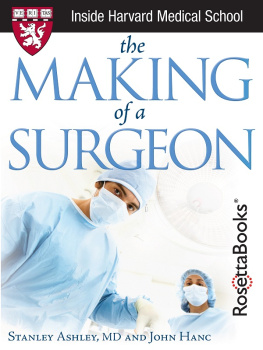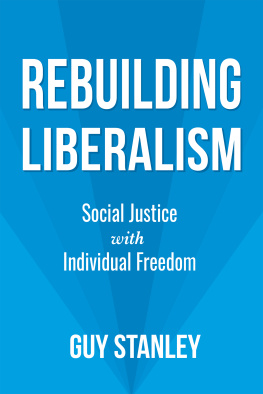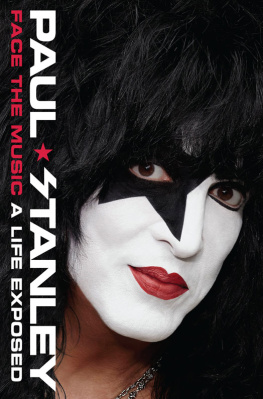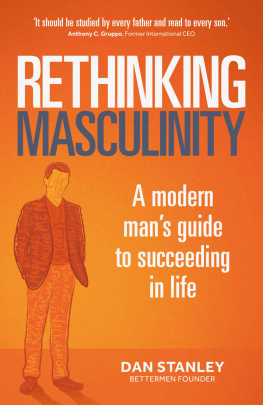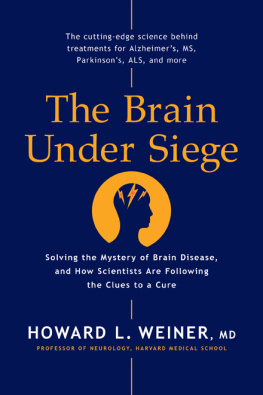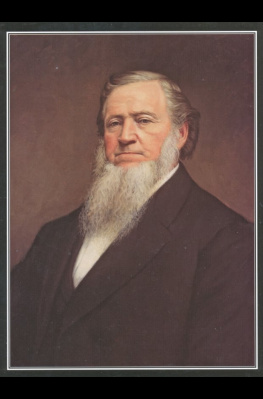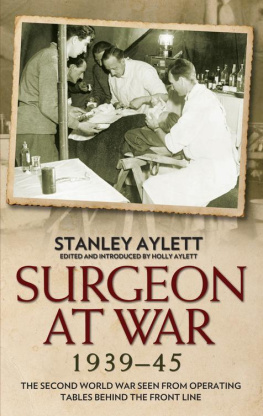Stanley - The Making of a Surgeon
Here you can read online Stanley - The Making of a Surgeon full text of the book (entire story) in english for free. Download pdf and epub, get meaning, cover and reviews about this ebook. year: 2012, publisher: RosettaBooks, genre: Detective and thriller. Description of the work, (preface) as well as reviews are available. Best literature library LitArk.com created for fans of good reading and offers a wide selection of genres:
Romance novel
Science fiction
Adventure
Detective
Science
History
Home and family
Prose
Art
Politics
Computer
Non-fiction
Religion
Business
Children
Humor
Choose a favorite category and find really read worthwhile books. Enjoy immersion in the world of imagination, feel the emotions of the characters or learn something new for yourself, make an fascinating discovery.
- Book:The Making of a Surgeon
- Author:
- Publisher:RosettaBooks
- Genre:
- Year:2012
- Rating:5 / 5
- Favourites:Add to favourites
- Your mark:
The Making of a Surgeon: summary, description and annotation
We offer to read an annotation, description, summary or preface (depends on what the author of the book "The Making of a Surgeon" wrote himself). If you haven't found the necessary information about the book — write in the comments, we will try to find it.
Ever wonder what it takes to be a surgeon? Step inside The Brigham and find out. Bostons Brigham and Womens Hospital is not only one of the oldest and most prestigious medical centers in America; its also Harvard Medical Schools main teaching hospital. Here, many of the countrys best surgeons learn their live-saving skills. In this gripping narrative, youll meet the young men and women in their surgical training; and follow in their footsteps through the hospital wards, the classroom and right into the operating rooms of The Brigham. Youll learn how these residents are educatedand how that training has changed. Co-authored by Dr. Stan Ashley, long-time director of surgical education at The Brigham, and Newsday writer John Hancauthor of two award-winning memoirsthis is a rare glimpse into a Harvard Medical School facility; and an inspiring and fascinating story about the young people who make the grade in one of the worlds toughest and most important professions.
ABOUT THE AUTHOR
Stanley Ashley, MD is Chief Medical Officer and Senior Vice President for Medical Affairs at Brigham and Womens Hospital as well as the Frank Sawyer Professor of Surgery at Harvard Medical School.
A graduate of Oberlin College and Cornell University Medical College, he completed a residency in General Surgery and joined the faculty at Washington University in St. Louis. He subsequently spent 7 years at the University of California at Los Angeles until 1997 where he assumed the position of Vice Chairman of the Department of Surgery and Program Director of the General Surgery Residency at Brigham and Womens Hospital as well as his current position at Harvard Medical School.
Dr. Ashley is a gastrointestinal surgeon whose primary interests are diseases of the pancreas and inflammatory bowel disease. His research, which has been funded by both the Department of Veterans Affairs and the National Institute of Health, has examined the pathophysiology of the small bowel and pancreas. His focus recently is on practical aspects of measurement of surgical quality and how these can be applied to improve outcomes, particularly for the individual caregivers. Closely related to this, he has an interest in physician education, both at the graduate and postgraduate (MOC) levels, and its integration into a certification/recertification process that ensures quality of care.
He is the author of more than 300 publications. He serves on numerous editorial boards, including the Journal of Gastrointestinal Surgery, the Journal of the American College of Surgeons, Current Problems in Surgery, and ACS Surgery. He is a former Chair of the American Board of Surgery and currently Secretary of the Society for Surgery of the Alimentary Tract and serves on the Board of Directors of the Accreditation Council for Graduate Medical Education (ACGME).
John Hanc is the author of ten books, including two award-winning memoirs, The Coolest Race on Earth (Chicago Review Press, 2009) about his experience running the Antarctica Marathon and Not Dead Yet (Thomas Dunne/St. Martins Press) written with bike racer Phil Southerland, founder of Team Type 1.
A long-time contributor to Newsday in New York, and a contributing editor to Runners World magazine, John Hancs work also appears in The New York Times, Family Circle, Smithsonian and Yoga Journal.
Previous books include Jones Beach: An Illustrated History (Globe Pequot Press, 2007) with a cover blurb from Donald Trump, who called it a book that any New Yorker would be proud to have in their collection...
Stanley: author's other books
Who wrote The Making of a Surgeon? Find out the surname, the name of the author of the book and a list of all author's works by series.

